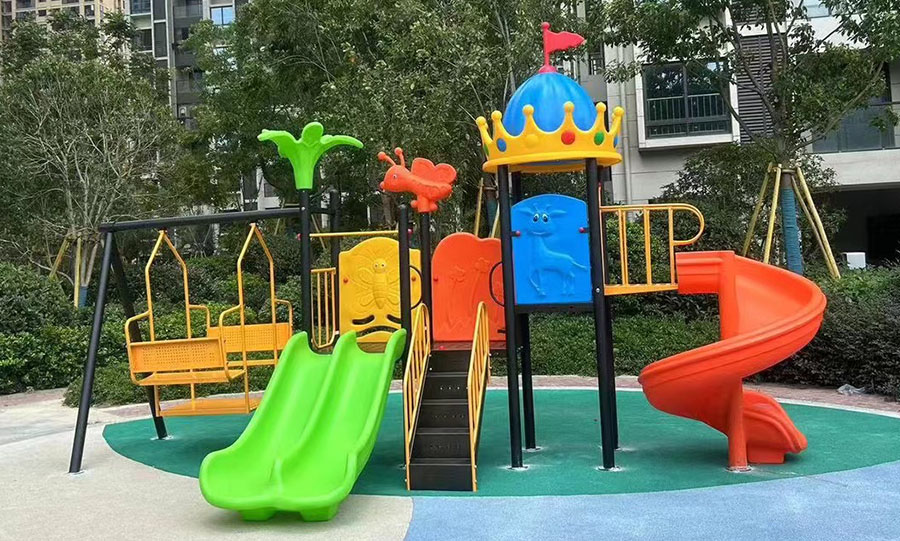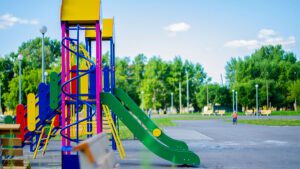Explorando materiais, engenharia e segurança na construção de escorregas para parques infantis
Os escorregas para parques infantis têm sido uma parte acarinhada da infância durante gerações. Transformam um simples quintal num vibrante parque infantil de diversão e aventura. Mas já se interrogou sobre os materiais utilizados no fabrico destas estruturas de jogo icónicas? Neste artigo, mergulhamos no mundo dos escorregas de parques infantis, descobrindo os materiais, os processos de engenharia e as caraterísticas de segurança que garantem uma experiência de deslize emocionante e segura.

A importância de materiais de deslizamento de qualidade
- Segurança em primeiro lugar:
A qualidade dos materiais é essencial para evitar acidentes. A superfície do escorrega deve ser lisa para garantir uma descida controlada e reduzir as queimaduras por fricção. - Longevidade:
Materiais duradouros significam menos reparações e um investimento mais duradouro. Os componentes de alta qualidade resistem aos elementos e à utilização contínua. - Apelo estético:
As cores vibrantes e os acabamentos suaves não só chamam a atenção como também estimulam a imaginação das crianças durante as brincadeiras.
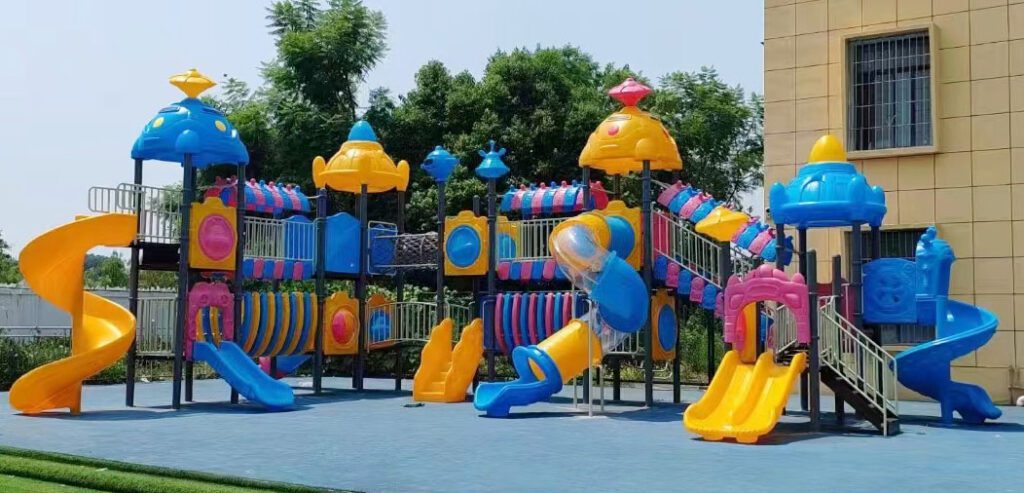
Evolução dos materiais dos escorregas para parques infantis
Historicamente, os escorregas dos parques infantis eram feitos de madeira ou de metal. Embora os escorregas de metal fossem duráveis, podiam ficar demasiado quentes ao sol e os escorregas de madeira partiam-se frequentemente. Atualmente, muitos escorregas são fabricados com materiais avançados que aumentam a segurança e o desempenho.
Materiais modernos: O padrão ouro do LDPE
A maior parte dos escorregas modernos para parques infantis são feitos de plástico resistente e rotomoldado - especificamente polietileno de baixa densidade (LDPE). O PEBD é preferido porque:
- Oferece uma superfície lisa e de baixo atrito para um deslizamento seguro e controlado.
- É resistente aos raios UV, mantendo a sua cor vibrante e o seu acabamento mesmo após uma exposição prolongada ao sol.
- É durável e requer uma manutenção mínima.
Materiais alternativos: Aço inoxidável e fibra de vidro
- Aço inoxidável:
Conhecido pela sua resistência à corrosão, o aço inoxidável é utilizado em alguns diapositivos, mas por vezes pode parecer demasiado frio ou duro. - Fibra de vidro:
A fibra de vidro permite desenhos criativos e intrincados e até efeitos translúcidos, embora se possa desgastar com o tempo em comparação com o LDPE.
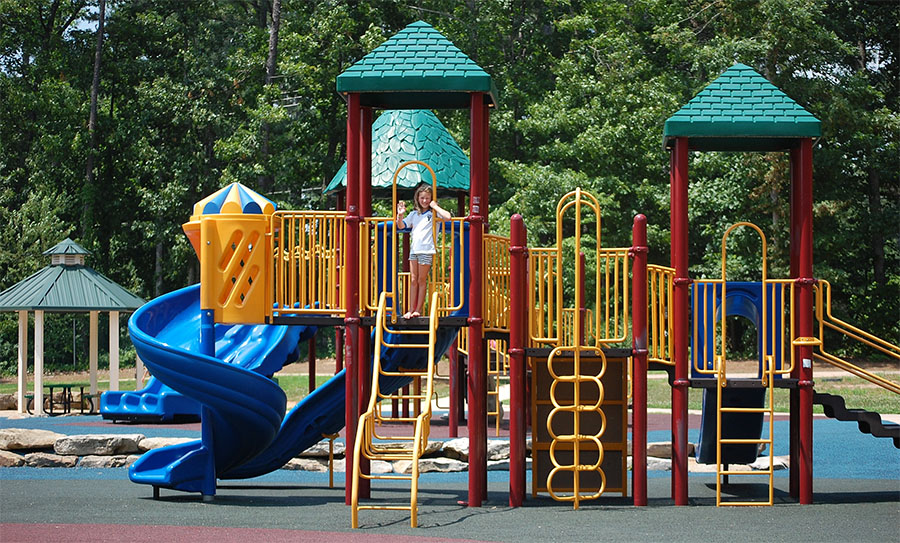
Como são fabricados os escorregas para parques infantis
1. A fase de conceção
Engenheiros e designers colaboram para criar projectos que consideram a altura, a inclinação e a curvatura, garantindo que o escorrega cumpre as normas de segurança e maximiza a diversão.
2. Seleção de materiais
A escolha do material correto é crucial. O LDPE é a melhor escolha devido à sua durabilidade, segurança e versatilidade estética. Alternativas como o aço inoxidável e a fibra de vidro são utilizadas com base nas necessidades do projeto e nas condições ambientais.
3. Processo de fabrico
- Slides LDPE: Produzido através de rotomoldagem, onde os grânulos de LDPE aquecidos são moldados numa estrutura robusta e oca.
- Corrediças metálicas: Fabricado por corte, dobragem e soldadura de chapas de aço inoxidável.
- Deslizadores em fibra de vidro: Construído por camadas de fibra de vidro e resina em moldes para uma forma e acabamento personalizados.
4. Controlo de qualidade e ensaios
Cada corrediça é submetida a testes rigorosos - inspeção de arestas afiadas, juntas fracas e garantia de que cumpre as normas de carga e segurança. É comum a certificação como a aprovação ASTM.
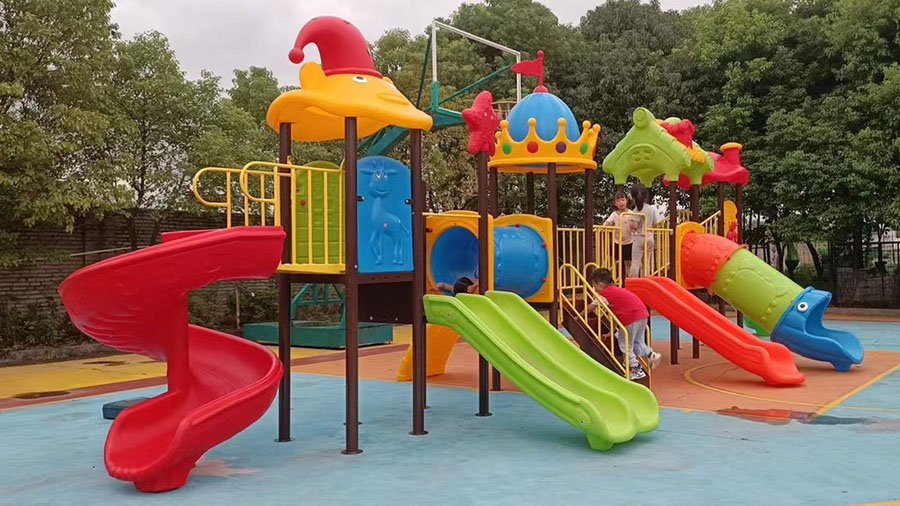
Dicas para escolher um escorrega de alta qualidade para o parque infantil
- Avaliar a espessura do material:
Materiais mais espessos em áreas críticas indicam um design robusto e duradouro. - Verificar as caraterísticas de segurança:
Procure superfícies antiderrapantes, cantos arredondados, corrimãos seguros e colocação de barreiras adequadas. - Ler a opinião dos clientes:
As opiniões de pais, escolas ou centros comunitários podem fornecer informações sobre a durabilidade e a facilidade de montagem. - Escolha marcas de confiança:
Opte por fabricantes estabelecidos com um historial comprovado em termos de segurança e qualidade.
Encontre o escorrega perfeito para o parque infantil na SPIKE
Na SPIKE, somos especializados em equipamento de alta qualidade para parques infantis. Os nossos escorregas são construídos principalmente em PEBD de primeira qualidade, garantindo segurança, durabilidade e uma estética vibrante. Com uma grande variedade de designs - escorregas tubulares, escorregas em espiral e modelos autónomos - pode personalizar o seu parque infantil para satisfazer as suas necessidades específicas. O nosso serviço de apoio ao cliente dedicado garante que recebe o produto perfeito e apoio durante todo o processo de instalação.
